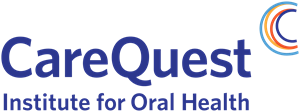- Public Inspection: CMS: Medicare Program: Implementation of Prior Authorization for Select Services for the Wasteful and Inappropriate Services Reduction Model
- CMS: Secretarial Comments on the CBE's (Battelle Memorial Institute) 2024 Activities: Report to Congress and the Secretary of the Department of Health and Human Services
- HHS: Patient Protection and Affordable Care Act: Marketplace Integrity and Affordability
- HRSA Announces Action to Lower Out-of-Pocket Costs for Life-Saving Medications at Health Centers Nationwide
- Public Inspection: HHS: Patient Protection and Affordable Care Act: Marketplace Integrity and Affordability
- Increased Risk of Cyber Threats Against Healthcare and Public Health Sector
- Eight Hospitals Selected for First Cohort of Rural Hospital Stabilization Program
- Announcing the 2030 Census Disclosure Avoidance Research Program
- CMS: Medicare Program; Hospital Inpatient Prospective Payment Systems for Acute Care Hospitals and the Long-Term Care Hospital Prospective Payment System and Policy Changes and Fiscal Year 2026 Rates; Requirements for Quality Programs; and Other Policy Changes; Correction
- CMS: Medicare Program; Hospital Inpatient Prospective Payment Systems for Acute Care Hospitals and the Long-Term Care Hospital Prospective Payment System and Policy Changes and Fiscal Year 2026 Rates; Requirements for Quality Programs; and Other Policy Changes; Correction
- CMS: Medicare and Medicaid Programs; Contract Year 2026 Policy and Technical Changes to the Medicare Advantage Program, Medicare Prescription Drug Benefit Program, Medicare Cost Plan Program, and Programs of All-Inclusive Care for the Elderly; Correction
- CMS: Medicare and Medicaid Programs; Contract Year 2026 Policy and Technical Changes to the Medicare Advantage Program, Medicare Prescription Drug Benefit Program, Medicare Cost Plan Program, and Programs of All-Inclusive Care for the Elderly; Correction
- CMS: Medicare Program; Prospective Payment System and Consolidated Billing for Skilled Nursing Facilities; Updates to the Quality Reporting Program for Federal Fiscal Year 2026
- CMS: Medicare Program; FY 2026 Hospice Wage Index and Payment Rate Update and Hospice Quality Reporting Program Requirements
- Public Inspection: CMS: Medicare Program: Fiscal Year 2026 Hospice Wage Index and Payment Rate Update and Hospice Quality Reporting Program Requirements
Updated Guidance for Rural Emergency Hospitals (REHs)
The Centers for Medicare & Medicaid Services (CMS) updated its guidance regarding the REH enrollment and conversion process for eligible facilities as well as the Frequently Asked Questions (FAQs). Congress established REHs as a new type of Medicare provider that cannot have acute care inpatient beds, must provide emergency and observation care, and may provide other outpatient services. In 2022, CMS published a final rule codifying the Conditions of Participation (CoPs) that REHs must meet in order to participate in the Medicare and Medicaid programs along with payment policies, quality measures and enrollment policies. This revised guidance addresses questions that have been raised since that time. For example, it includes a question clarifying that meeting the FORHP definition of rural will not meet the statutory requirements for converting to an REH. Final interpretive guidance for REHs is pending and will be provided in a future release.
Financial Performance of Rural and Urban Hospitals in the Medicare Shared Savings Program
This brief from the RUPRI Center for Rural Health Policy Analysis presents financial performance trends of hospitals who participated in Medicare’s Shared Savings Program (SSP) from 2011 to 2018. Trends in six financial outcomes are compared between SSP and non-SSP hospitals over time and between rural and urban hospitals.
ERS on Household Food Security in the United States in 2023
The Economic Research Service (ERS) at the U.S. Department of Agriculture reports that 13.5 percent (18 million) of U.S. households were food-insecure, meaning they were uncertain of having, or unable to acquire, enough food to meet the needs of all their members because they had insufficient money or other resources for food. Last week, the ERS updated State Fact Sheets for rural economic factors including population, income, poverty, food security, education, employment, and more.
AHRQ Stats: Sepsis Treatment Locations 2019 to 2021
A recent publication examines differences across rural and urban hospitals in the rates of sepsis cases as well as attributes such as length of stay, cost of care, and death rates. The report, from the Healthcare Cost and Utilization Project of the Agency for Healthcare Research and Quality (AHRQ), looked at the over 2 million admissions each year with sepsis as a primary diagnosis and found distinctions between rural and urban facilities in the proportion of admissions for this reason as well as additional differences based on facility ownership status. Of note, rural hospitals admitted proportionately fewer sepsis cases, had lower costs and length of stay, and experienced a rise in death rates, from 7.5 to 10.3 percent, over the three years studied.
Suicide Rates and Selected County-Level Factors, 2022
In the latest Morbidity and Mortality Weekly Report, the Centers for Disease Control and Prevention (CDC) reports that rates were lowest in the counties with the highest health insurance coverage, broadband Internet access, and household income. In 2022, the overall suicide rate was 14.2 per 100,000 population; rates were highest among non-Hispanic American Indian or Alaska Native persons, (27.1), males (23.0), and rural residents (20.0).
AHRQ State-Based Healthcare Extension Cooperatives
– Apply by December 12. With major funding from the Patient-Centered Outcomes Research (PCOR) Trust Fund, the federal Agency for Healthcare Research and Quality (AHRQ) will award up to 15 grants. Representing an historic investment and initially focused on behavioral health, the Healthcare Extension Cooperatives will disseminate and implement PCOR findings to improve healthcare policy at the state level, especially for people who receive Medicaid, are uninsured, or are medically underserved. The official Notice of Funding Opportunity lists rural as a priority population, naming CMS Medicare-certified Rural Health Clinics among safety net health care delivery organizations expected to play a role in this initiative.
2023 ACS 1-Year Estimates Released

The latest research brief highlights key findings from the 2023 American Community Survey (ACS) 1-Year Estimates. This report provides updates on Pennsylvania’s demographic, social, and economic trends, covering topics such as household income, housing, educational attainment, and internet access. Additionally, the brief discusses changes in housing burdens across different racial and ethnic groups.
CDC Office of Rural Health Releases Inaugural Rural Health Plan

The CDC Office of Rural Health has released its inaugural Rural Public Health Strategic Plan to protect and improve the health of America’s rural communities.
This plan outlines key priorities that provide a blueprint for CDC’s rural public health work for the next five years. Please take a look at the plan and share it with colleagues who work in rural public health and related areas.
Just Published! Trauma-Informed Care: The Role of Dental Hygienists
 Children and adults with a trauma history are more likely to have poor oral health and increased dental care-related fear and anxiety.
Children and adults with a trauma history are more likely to have poor oral health and increased dental care-related fear and anxiety.
An article from the CareQuest Institute for Oral Health was recently published in the Journal of Dental Hygiene. “Trauma-Informed Care in Oral Health Care: The Role of Dental Hygienists,” examines the critical role of dental hygienists to ensure patients feel heard and make them feel comfortable enough to return for regular dental care.
Health Policy Institute Publishes Dental Education Map
The American Dental Association Health Policy Institute (HPI) developed a map based on data from the Commission on Dental Accreditation’s 2022-2023 Survey of Dental Education. The map includes profile information of each accredited DDS/DMD program in the United States.
